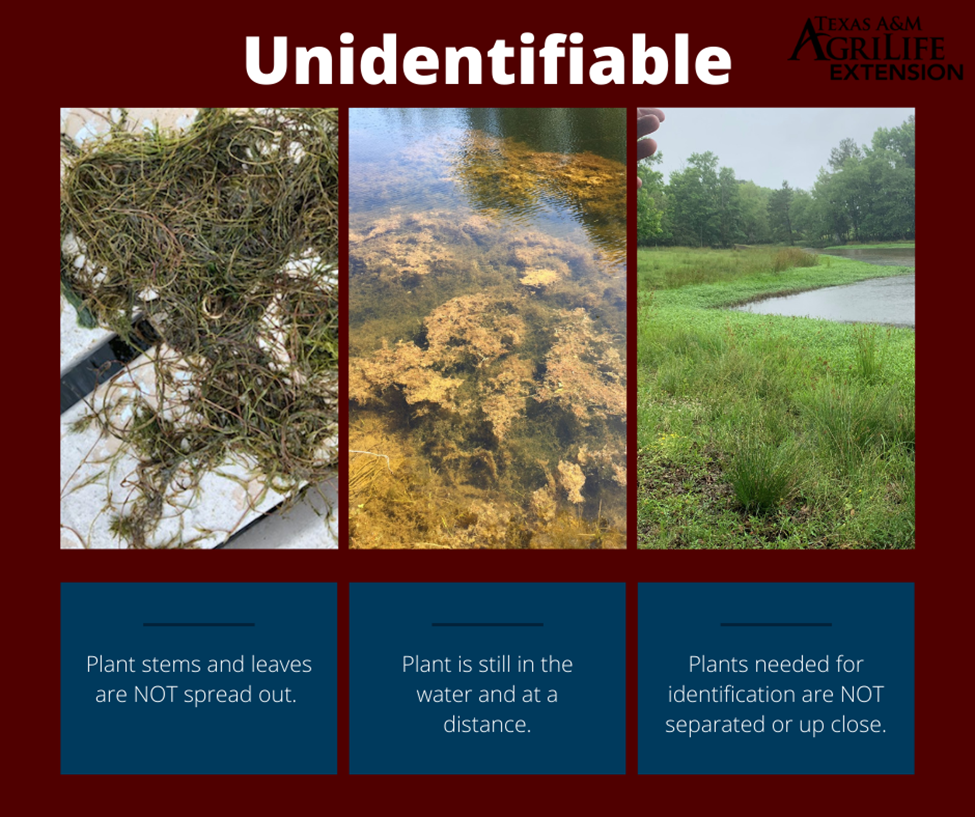When it comes to managing aquatic vegetation, the first critical step in selecting an effective control method is identification. Individual treatments do not work across all, or even most, aquatic vegetation species. Selecting treatments before proper identification can result in an ineffective treatment and a waste of money, time, and labor.
Thanks to current technology, specifically the widespread use of cell phones with high quality cameras, pond owners can forgo collecting a plant specimen and sending it in the mail. This is good news as plant material and Texas heat do not mix well. Mailing usually leaves the recipient with a smelly, decomposing plant, which can make identification hard. Instead, photos of the unidentified plant can be taken and sent directly using a phone, computer or tablet.
The main caveat of plant material being physically absent during identification is the requirement of high quality photos. Some plants, especially those with large, showy flowers, can be identified from a far, however as you can see from the photos below, this is not usually the case and closer inspection is required.

So, what classifies as high quality? Photos should be taken to highlight key characteristics like flowers, leaf arrangements, and nodes (stem area from which a leaf or leaves, branch or branches originate). The unidentified plant should be taken out the water, placed against a contrasting background (preferably white), with stems and leaves spread out. The photo should then be taken up close (preferably within 1 foot, or until the plant fills the frame), with the plant material in focus, and eliminating any shadows. Including scale items, like a hand, coins, or other readily available items, will also help for size comparison. See below for examples.

Additional information like pond use and overall goals, along photos of the plant material relative to the water column (emergent vegetation) and coverage area (all vegetation types), will help provide more guidance when coming up with a management plan.
For more information on aquatic vegetation identification, please visit AquaPlant or contact the Aquatic Vegetation Management Program Specialist, Brittany Chesser (Brittany.chesser@tamu.edu).
